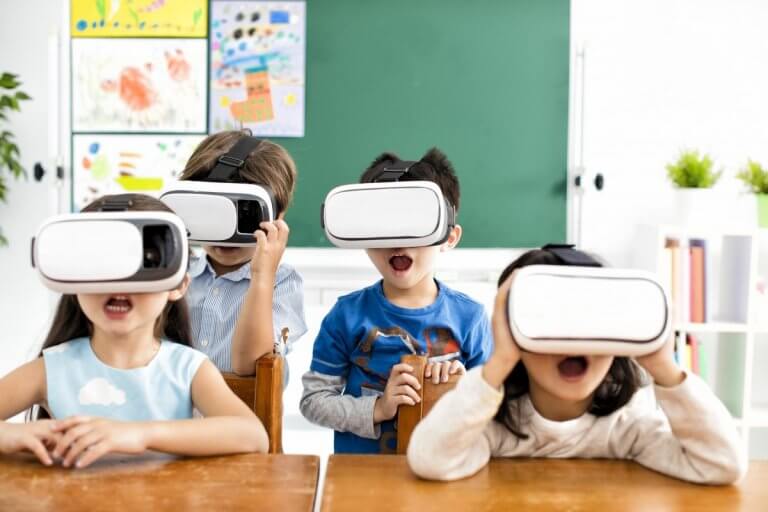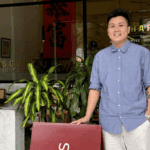
The rapid growth of technologies like virtual reality, artificial intelligence (AI) and blockchain are bringing new changes to the education sector.
There is much excitement over what 2019 will bring, and how teachers and educators will be using these new technologies in the classroom.
In the UAE, schools have already incorporated new technologies in their teaching methods, but this year it’s set to expand further.
While virtual reality excursions and AI-powered teaching assistants are already rife, digital transformations are getting even more advanced.
One digital tool already in use in several UAE classrooms is the touch board. These interactive, flat panel displays work like large touchscreens, with displays on which teachers can show slides, videos, etc.
Rendering the projector and traditional whiteboard/blackboard obsolete, they also double as writing boards, where teachers and students can write on them using a swipe of their finger.
Not only is this a useful tool for teaching, it’s also cost-effective and good for the environment as there’s no need for markers and erasers.

Touch boards have vivid interactive displays. Source: St Joan of Arc School
Augmented virtual reality is also set to be the future of the classroom due to its enormous potential for tangible learning without needing to leave the school or classroom.
For example, imagine taking students on a tour of a historical landmark on other side of the globe, or experiencing the structure of an atom at a close range.
These are the kind of experiences virtual reality can bring to students, and it remains to be seen if they will become the norm in schools across the UAE.
Lena Bell, Head of Innovation at GEMS International School in Al Khail, told the Khaleej Times that she believes more virtual and augmented reality (VR/AR) will continue to be an influence in classrooms this year.
“Younger students’ VR/AR creation apps will become increasingly available and more diverse. The Internet of Things (IoT) has become such an important part of our daily lives. I believe IoT will continue to transform classrooms digitally as it plays a major role in personalising learning experiences.
“It allows digital classrooms to become flipped classrooms and increases the potential for immediate feedback with real-time applications and online collaboration between students and teachers.
“Schools will continue to develop their understanding of technology as a tool and not as a toy, which will empower students to succeed in an unknown future.”

VR will continue to have a big impact in schools this year. Source: Commonsense.org
Helen Loxston-Baker, Director of Teaching, Learning and Innovation at GEMS Wellington Academy Silicon Oasis (WSO), said that students at her school are now using digital notebooks to store their work.
“At WSO, we are continuing to focus on how to develop our approach to blended learning, and we have launched the use of Microsoft Teams and OneNote. In conjunction, we want to create a classroom space for students to collaborate digitally as well as record all of their learning in one place in their digital notebook,” she said.
“Teachers can also mark students’ work live, giving instant feedback. Accessibility tools for students with different learning needs now come as integrated features, such as the immersive reader in Microsoft products. These products help personalise the learning experience for all students. Let’s hope we see more features to support personalisation in the future.”
But Loxston-Baker emphasised that when it comes to technology, caution must be exercised. Teachers should ensure that new digital products are really being used to transform learning.
Besides using technology for additional teaching tools in the classroom, teachers should also ensure that students are being digitally responsible, especially with social media.
Bell said, “With social media playing an ever-increasing role in society, students of all ages are quite familiar with its various platforms. In primary school, it has become increasingly important to spend time developing students’ digital citizenship and critical thinking skills.
“This is not a new topic by any means, but as its importance and prevalence increase, teachers need to set an example on how to be responsible with social media and provide safe platforms for students to collaborate and share ideas.”
Bell explained that digital technologies reflect the interests, familiarities and abilities of students, which ultimately helps them become more engaged in the classroom.
She also said that since children today are digital natives, digital transformations in the classroom keep technologies relevant and applicable.
“A technology-rich classroom is natural for these learnings, thus empowering them to succeed in a familiar environment. As technology continues to evolve, so will the world of education, so that we can continue to meet the needs of our students.”







